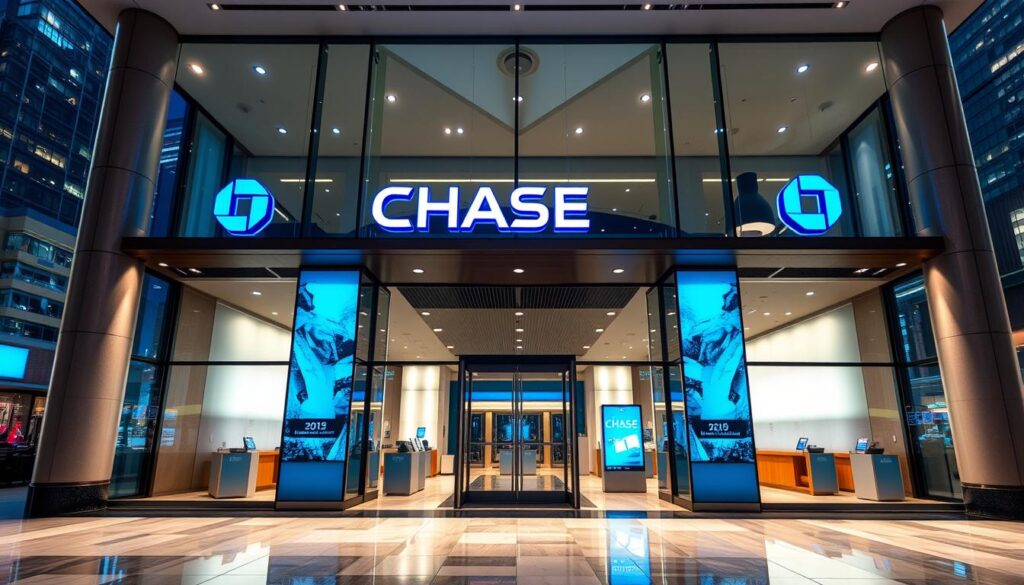Have you ever wondered why so many physical branch locations are shutting down? It’s a question that’s been on my mind lately, especially as I’ve noticed the growing shift toward digital banking. In 2024, Chase plans to close at least 23 branches across various states, leaving many customers wondering what this means for their service and convenience.
This trend isn’t unique to Chase. Across the U.S., the number of physical locations has been declining for years. But why is this happening? Is it simply a matter of cost-cutting, or is there a bigger picture at play? As someone who values both accessibility and innovation, I decided to dig deeper into the reasons behind these closures and what they mean for the future of banking.
In this article, I’ll explore the key factors driving this change, from the rise of online banking to the impact on local communities. Whether you’re a long-time customer or just curious about the industry, understanding these shifts is essential. Let’s uncover the truth behind the closures and what you can expect moving forward.
Key Takeaways
- Chase is closing 23 branches in 2024, reflecting a broader industry trend.
- The shift to digital banking is a major driver of branch closures.
- These changes impact customer convenience and community access.
- Understanding the reasons behind closures helps prepare for the future.
- Physical branch reductions are part of a larger transformation in banking.
Exploring “chase banks closing” Trends and Implications
The shift in how we manage our finances is reshaping the banking landscape. As more people embrace online and mobile banking, the need for physical locations is decreasing. This trend is evident in the recent decision to close several branches across the country. But what’s driving this change, and how does it affect customers and communities?
Key Reasons Behind the Closures
One of the main factors behind these closures is the rise of digital banking. With apps and online platforms, customers can now handle most transactions from their phones or computers. This convenience has reduced the demand for in-person services. “The way people bank is changing,” says a financial expert. “Branches are no longer the primary point of contact.”
Cost control is another significant driver. Maintaining physical locations is expensive, and consolidating branches allows banks to save money. For example, in Colorado, branches in Arvada and Denver are among those closing. Similar trends are seen in Connecticut, with locations in Greenwich shutting down. These decisions reflect a broader strategy to streamline operations.
Impact on Local Communities and Customers
While these closures make sense from a business perspective, they can have a real impact on local communities. For some, a nearby branch is essential for accessing services, especially in areas with limited internet connectivity. The loss of a branch can make it harder for residents to manage their accounts or get financial advice.
Customers who prefer face-to-face interactions may also feel the effects. For older adults or those less comfortable with technology, the shift to digital banking can be challenging. However, banks are working to bridge this gap by offering support and training to help customers adapt.
As the industry continues to evolve, understanding these changes is crucial. While the decline of physical branches may seem concerning, it’s part of a larger transformation in banking. By staying informed, customers can better navigate this new landscape and make the most of the tools available to them.
Why Are So Many Chase Branches Closing?
The landscape of financial services is undergoing a significant transformation. As more customers embrace digital tools, the need for physical locations is decreasing. This shift is evident in the closure of numerous branches across the country. But what’s driving this trend, and how does it affect access to essential services?
Regional Examples and State-Specific Data
In states like California, New York, and Ohio, the number of closures has been particularly high. For example, California saw 72 branch closures in the first half of 2024, while New York had 51. In Ohio, four locations shut down in just one week, marking it as one of the most affected areas.
These closures are not random. They reflect a strategic decision to consolidate operations in areas where digital adoption is high. In cities like Denver and Chicago, where online banking is widely used, the impact of these closures is less severe. However, in suburban or rural areas, the loss of a branch can significantly limit access to services.
Changes in Branch Network and Customer Access
The transition to online banking is a major factor behind these closures. With apps and platforms allowing customers to manage their accounts from anywhere, the need for in-person visits has dropped. “The way people interact with their bank is changing,” says a financial expert. “Physical locations are no longer the primary touchpoint.”
However, this shift isn’t without challenges. For older adults or those in areas with limited internet access, the closure of a nearby branch can make banking more difficult. Banks are addressing this by offering support and training to help customers adapt to digital tools.
Here’s how these changes are playing out in different areas:
- Urban Centers: In cities like New York and Chicago, closures are often offset by the availability of online services and nearby branches.
- Suburban Areas: Residents may need to travel farther to access a physical location, but digital tools are increasingly filling the gap.
- Rural Regions: The impact is most severe here, as closures can leave entire communities without easy access to banking services.
Understanding these trends is crucial for anyone navigating the changing banking landscape. While the decline in physical branches may seem concerning, it’s part of a broader evolution in how we manage our finances.
Today’s Chase Bank: Safety, Stability, and Future Risks
In today’s fast-changing financial world, safety and stability are top concerns for many customers. As digital banking grows, the shift away from physical branches has raised questions about the security of traditional institutions. Is Chase Bank still a safe place for your money? Let’s explore the current state of the bank and what it means for you.
Is Chase Bank Safe Now?
Chase Bank remains one of the largest and most trusted financial institutions in America. With over 80 million customers and trillions of dollars in assets, it’s considered a cornerstone of the U.S. banking system. The bank’s focus on digital tools ensures that customers can manage their accounts securely from anywhere.
During holidays like Presidents’ Day, when branches are closed, online services remain operational. This continuity highlights the bank’s commitment to accessibility. “Digital banking is not just a trend; it’s the future,” says a financial expert. “Chase is leading the way in ensuring customer safety.”
Exploring the Possibility of a Collapse
While Chase’s size and stability make it unlikely to collapse, it’s important to understand the risks. The bank’s consolidation efforts, including branch closures, are part of a larger plan to adapt to digital trends. However, this shift has sparked concerns about systemic risks in the banking sector.
Here’s a breakdown of key factors affecting Chase’s stability:
| Factor | Impact |
|---|---|
| Digital Transition | Reduces reliance on physical branches, increasing efficiency. |
| Consolidation | Helps control costs but may limit access in some areas. |
| Regulatory Oversight | Ensures compliance with financial safety standards. |
Despite these measures, customers should stay informed about their bank’s health. Monitoring account activity and using secure online tools can help protect your finances. While the risk of collapse is low, understanding these factors is essential for peace of mind.
Comparing Chase with America’s Leading Banks
When it comes to financial stability, how does Chase stack up against America’s top institutions? As one of the largest banks in the U.S., Chase has a strong presence, but how does it compare to competitors like Wells Fargo and Bank of America? Let’s dive into the metrics that matter.

Assessing the Strongest and Oldest Banks in America
Chase’s branch network is one of the most extensive in the country, with over 4,800 locations. This gives it a significant edge in accessibility, especially in urban areas like New York. However, Bank of America and Wells Fargo also boast robust networks, making the competition fierce.
Deposit figures are another key metric. Chase holds trillions in customer deposits, reflecting its trustworthiness. “Size matters in banking,” says a financial expert. “Larger institutions like Chase are often seen as safer bets.”
Evaluating Risk: Which Bank is Least Likely to Fail?
When assessing risk, Chase’s acquisition of First Republic branches highlights its strategic growth. This move not only expanded its branch network but also strengthened its deposit base. However, Wells Fargo’s focus on digital innovations and Bank of America’s investment in technology make them strong contenders.
Here’s a quick comparison of key factors:
- Branch Network: Chase leads with over 4,800 locations, but Bank of America and Wells Fargo are close behind.
- Deposit Stability: Chase’s trillions in deposits provide a solid foundation, but competitors are equally robust.
- Digital Innovation: Bank of America’s online banking tools are highly rated, while Chase is catching up.
Ultimately, the best bank depends on your needs. For those prioritizing accessibility and a strong branch network, Chase is a top choice. However, if digital tools and innovation are your focus, Bank of America or Wells Fargo might be better fits.
My Guide to Navigating Digital Banking and Branch Closures
Adapting to digital banking has become essential in today’s financial landscape. With branch closures becoming more common, understanding how to manage your account online is crucial. I’ve personally navigated this shift and want to share practical tips to help you stay on top of your finances.
Transitioning to Online Banking in Times of Closure
When branches close, online platforms become your primary tool for managing your account. I found that setting up mobile banking was a game-changer. It allows you to check balances, transfer funds, and make payments from anywhere.
During holidays like Presidents’ Day, when branches are closed, digital services remain available. This ensures you can still handle urgent transactions. “Digital banking is not just convenient; it’s a necessity,” says a financial expert.
Personal Tips on Managing Your Account
Here are some strategies I’ve used to adapt to the changing banking environment:
- Plan Ahead: If you know a branch will be closed, withdraw cash or handle transactions in advance.
- Use ATMs: ATMs are a reliable alternative for accessing cash when branches are unavailable.
- Explore Digital Tools: Apps and online platforms make it easy to manage payments and transfers securely.
Adapting to the new branch network takes time, but it’s worth the effort. By embracing digital tools, you can ensure uninterrupted access to your finances, even during closures.
Conclusion
The banking industry is evolving rapidly, and understanding these changes is crucial for every consumer. The shift toward digital platforms has driven the need for fewer physical locations, impacting local communities. However, this transition offers convenience for most users, especially in cities like New York City.
Safety remains a priority, and institutions like Chase continue to adapt to ensure stability. Compared to competitors like Wells Fargo, Chase’s focus on digital tools provides a seamless transaction experience. This approach is essential during temporary closures, such as those in February.
To navigate these changes, embracing online banking is key. Whether managing a payment or accessing services, digital tools ensure uninterrupted access. By staying informed and adapting, consumers can thrive in this new banking landscape.

